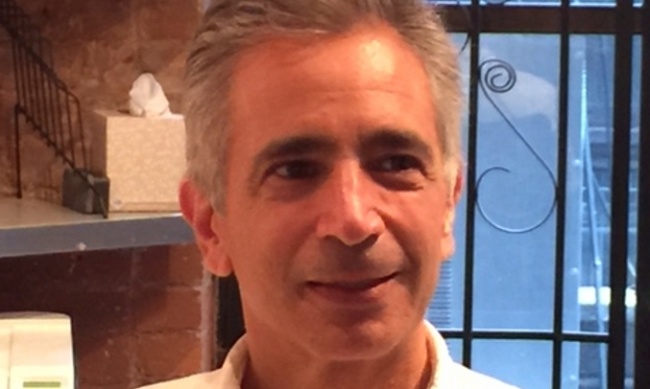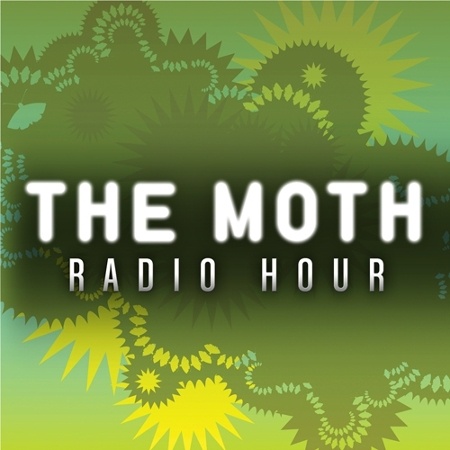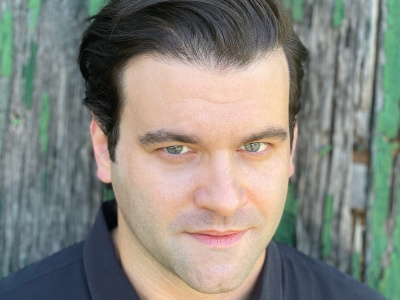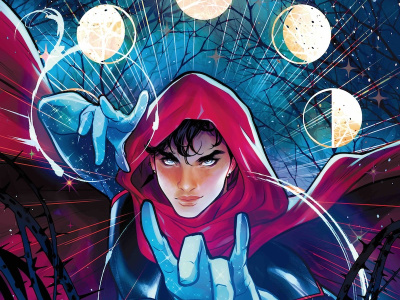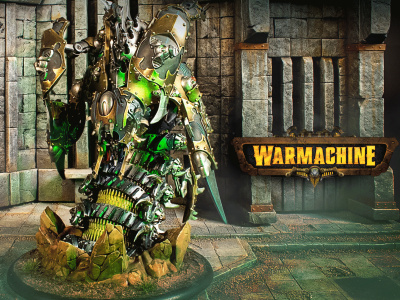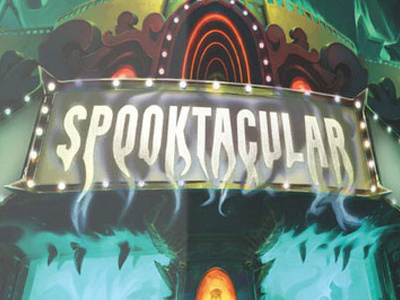We recently caught up with one-time Marvel COO Bill Jemas, who’s now at Double Take (2T), the new comic publishing imprint from video game publisher (Grand Theft Auto, Bioshock) Take Two Interactive (see "Former Marvel COO Jemas Back in Comics"). The company recently announced its first titles, which take place in a common creative universe (see "Double Take Launches 10 Titles in September"). In Part 2 of our two-part interview, we talk about the launch issues of pricing, accessibility, marketing, digital, and the talent. In Part 1, we talked about how the comic publishing world has changed since Jemas’ Marvel tenure (2000-2004), his thoughts on overprints and variants, and on launching a new comic company in the current environment.
You mentioned your $2.50 cover price, which obviously is on the low end of what’s out there. Are these 32-page books?
Thirty-two-page books, the same quality as a $3.99 book. And that’s an earmark of Ultimates. We were doing Ultimates at $2.25, but we didn’t have the same printing quality and paper quality that we did on the more expensive books. Right now, it’s the same quality as a $3.99 book; we’re going to get out there at $2.50. And again, we can do that because we’re not trying to print 5,000. We’re printing a decent number so we can get the best rate for the printer. We’re pushing the price down by taking a little bit of a risk on the upfront printing.
One the hallmarks of what you tried to do at Marvel was accessibility and giving readers a jumping-on point where they didn’t have to have the weight of the full universe behind them. Are these books connected or in the same universe?
What I said to the guys at Marvel is like what Steve Jobs said at Apple: simple enough so I can use it, simple enough so I could read it. All the books are in a connected universe, but each series stands on its own so you can pick up any of the #1s and you’ll understand them all. It’s fun to have a common universe because in 10 books you don’t have 10 police chiefs, you have one police chief. When zombie apocalypses happen, the police chief has to get around, so you do see the same characters show up in all the different books, and we just have to sweat the details of making sure that we don’t accidentally put the same person in different places at the same time.
But overall, easily accessible, which is a segue to the point I want to raise next, which is that all the books will be free online and they’ll be free online through the first native mobile format and player. So every book that we’re doing was conceived and written and drawn so that it looks the best it can possibly look on a cell phone. That’s step #1. Very much like Marvel did with free print samples, we’re hoping that we can do with free digital samples so that the kid with a cellphone in his back pocket instead of a comic book in his back pocket can just go over to Double Take Universe, click on any cover that looks good and read the comic book by clicking a panel at a time.
To get that online audience to sample the comics, are you going to be able to use the resources of Take Two to reach their customer base to try to convert them to the comics?
We can’t and shouldn’t do the easiest thing, because Take Two’s a real company that’s very responsible. The easiest thing to do would be to grab an email list and stick our newsletter on it and send it, but we take the [e-mail] double opt-in pretty seriously. Where Take Two’s the most helpful is they have a lot of marketing know-how and they understand the need to spend a little bit of cash to market the books.
The marketing budget I have at Double Take is a multiple of the marketing budget I had at Marvel. A lot of the things we did publicity-wise, I’ll admit we did because it was fun, but also because we had to. Our marketing budget at Marvel was $9,000 a month; that was one Wizard ad. Then we’d beg, borrow and steal to get a little cash to spend on Newsarama or some other online outlets, but there was really no dough. Take Two has a lot of people who understand marketing and especially mobile marketing and they have some cash, but we’re not glomming onto their customer lists in any inappropriate way.
The digital previews have the word balloons at the bottom of each panel; will the print versions be the same, or is that just the way they’re displayed for reading online?
We have another month to take those online stories and make them better. Right now we have them online because it’s good to have feedback from people who don’t know us from a hole in the ground. And we’re getting some good feedback. The reason why the dialogue balloons are on the bottom is when the online books are the best, they animate a little bit. You’ll flip from panel to panel and you’ll see someone un-holster a gun, point it and shoot it. You’ll see the un-holstering, the shooting and the muzzle flash and your brain fills in the gaps and it animates, unless there’s balloons. In that case the things that would move the most on the screen would be the balloons so you would be distracted from the animation and you would just see the balloons. On the digital version the text is more streamlined and is at the bottom of the page. In the print version, there’s more text and the text is in balloons and they’re where they should be in a comic book.
And this is obvious, but I’ll say it anyway, some of the panels that are the best ones we do a better job drawing the details, both illustrating and coloring them. Those get blown up and can either be a full or half of a page. So the books when they’re printed look like comic books. And it’s been a challenge. We thought this was going to work when we started, we really wanted it to, and as the months have progressed, we’ve really gotten better at the craft of making digital storyboards that animate easily and then converting those same panels into traditional comic book pages that are fun to sit down and read.
Looking over the list of creators, it looks like you have a role in putting together the universe, and then there are individual teams on the books. Can you tell us about the talent you have lined up for these books?
Pretty much all of them are comic book fans, thank goodness. None of them have comic book experience and they turned out to be wonderful dialogue writers. So we have solid, in-house artists, who are good visual story-tellers, and then good dialogue writers, very good oral storytellers, and it’s really a nice marriage. You get an inkling of that in the books that are online right now, but they come together much, much better in issues 2s, 3s, and 4s. I’m thrilled with level of talent we have right now. I’d be more thrilled if I still had Mark [Millar] and Brian [Michael Bendis] and Joe Straczynski, and Garth [Ennis], but you play the hand that you’re dealt. In terms in what we’re getting now from talent that’s relatively new to the industry, it’s just wonderful.
You mentioned earlier you expected creators to be faring betting in the industry financially these days. Is Double Take doing anything differently in how it approaches its talent relations?
To start, we’re paying at higher rates than we otherwise would if we were independent. Better than I did at 360ep when I dabbled in this a little bit and was paying out of my own pocket. We’re paying people enough that they feel they can make a real living with Double Take if we all do well and I think that’s a big chunk of it. Beyond that, with talent relations, nothing all that differently yet. They’re not creator-owned stories, they’re owned by Take Two. People who write for us generally have a good experience. It’s streamlined, we’re not bureaucratic.
I really took for granted how relatively easy it was to tell stories within the Marvel Universe. And I say that having seen the stories that were told before my crew came in, and the stories that have been told after. I’m not minimizing what the guys did; they really changed the paradigm from soap opera to feature film, and that was a remarkable achievement. But I really underestimated how important it was to have a common universe and common characters in terms of writers getting some traction.
If you’ve been around the creative business a long time, there’s a feeling when you first enter it that the more creative freedom the better, that creators do best when they’re allowed to do whatever they feel like. What’s really true is not quite the opposite, but half-way down the spectrum. If there are set of hard and fast rules, then creators have an easier time. They don’t have to make 100,000 decisions; they have to make 20 decisions. And when they have some parameters they do better.
The difficulty for us was building entirely from scratch, and that’s why we punted. We found Night of the Living Dead was public domain, and Night of the Living Dead turned out to be a common ground. And even though every book that starts where the movie starts goes in wildly different directions by the time they get to issue 3, having that traction, having everybody on the same playing field doing the same thing, at least at first, turned out to be what got us from no books to lots of books real fast.
How would these books be rated? What’s the target age and gender for these books?
We haven’t figured out ratings yet, and we don’t have much time to get the rest of the way there. Right now we’re at same level as a typical Marvel book was when I was there. We don’t say the George Carlin seven dirty words; we don’t show any naughty bits.
My sense is that it would be a lot more fun for adult audiences to go to the HBO level where people get naked when they’re supposed to get naked and people drop f-bombs when people drop f-bombs. We may end up doing that first in a digital version that may not be behind a pay wall, but that’s behind something. That’s my inclination right now, but really we’re trying to figure out so many things I just haven’t had time to figure that piece out yet.
What are you doing to help attract an audience to buy your books to comic book stores?
We have a limited sales staff right now, but our head of sales, Gabe Yocum, has basically been on the phone with retailers one at a time, essentially offering cash for promotions that the retailer thinks would work best. What Gabe is saying, is "look, we can allocate cash over to you with any kind of a reasonable purchase. Tell us what you would like to do that would help. Do you want an artist signing? Do you want us to put an ad in the local paper? Do you want us to dress people up in zombie costumes and walk around your block?" We’re more or less all ears at this point.
What is the number one selling point of this line?
The best thing about the books is that they’re true stories told with pictures. By that I mean, the Moth writers are telling true stories. Things that actually happened to them are put into the mouths of the characters in dialogue. So if you read through one of these stories, you’ll hear a really interesting, funny true story told by a live storyteller, typically their better stories that won their grand slam contest.
So that’s for the verbal processing part of your brain. Then we pair that with pictures that are entirely wide-open fantasy comic book stuff. For me, the best part of the books is that you get to listen to really good dialogue that has a wonderful story embedded and you get to see good, kinetic comic book action.
When we were doing the Ultimate books, what was the best selling point? They’re teenagers, they’re this, they’re that, Spider-Man’s not a newspaper reporter, he’s a webmaster. All that stuff, when all was said and done, those books were the most important books in the industry at that time because they were the best stories in the industry and they were the best drawn. So I think in the long haul what will make these books sell is that they’re fun to read.
Click here to go back to Part 1.



